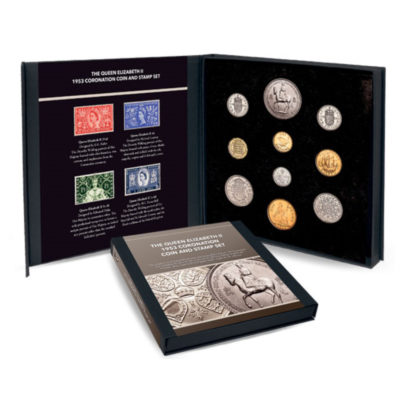The 1950’s began with the world still recovering from the ravages of World War Two. It also saw huge population growth with the “baby boomer” generation, and the “Cold War” between the Soviet Union and the United States of America was heating up. Meanwhile, in Britain, Elizabeth Windsor was about to ascend to the throne.
A New Queen
In August 1950, Charles was approaching two years of age when Elizabeth gave birth to her second child, Anne. Elizabeth and her husband, Philip, had travelled to Kenya when, on the 6th February 1952, the news broke that her father King George VI had died, and she was now the new Queen. But her active service for Britain, and commitment to meeting as many of its subjects as possible, did not start here. In 1951 she had already been on a six-week tour of Canada, which culminated in a trip to Washington D.C. on the 31st October to meet President Harry S. Truman and his wife Bess.
The trip to Kenya marked the start of a five-month tour of Commonwealth countries. However, when the news about her father’s passing was released, she flew back to Britain immediately with her husband, and took the oath of accession as Queen on the 8th February 1952.
Remaining a Windsor
As is traditional, it was believed, after the Queen married Prince Philip in 1947 that she would take her husband’s surname, Mountbatten. A name which Prince Philip himself adopted from his maternal grandparents, after the Prince and Elizabeth got engaged.
However, both Elizabeth’s grandmother Queen Mary, and the then Prime Minister Winston Churchill, voiced their opinion that the name Windsor should remain. The Queen herself would change this by the end of the decade, announcing that all male-line descendants who did not carry royal titles should be named Mountbatten-Windsor.
Coronation and the Commonwealth Tour
On the 2nd June 1953 Queen Elizabeth II was crowned at Westminster Abbey, and for the first time, in front of a worldwide television audience.
In November that year the Queen and Prince Philip resumed their tour of the Commonwealth. Dubbed the ‘World Commonwealth Tour’ it became the longest tour of her reign, lasting until the following May. She visited Australia and New Zealand, being the first reigning monarch to do so. She also visited the West Indies, Asia, Africa and Gibraltar.
In October 1956, Queen Elizabeth became the first monarch to personally open the Canadian Parliament, and the following year continued her travels, visiting Portugal, France, Denmark and the United States of America, where she addressed the United Nations General Assembly.
The Queen’s Speech
The Christmas Message was a tradition that started in 1932 with King George V, and 1957 brought with it the first televised Queen’s Christmas Message. In it she hoped that the medium of television would make the message more ‘personal and direct’. She summed up how much the 1950’s had brought change to the world, by saying “Today things are very different. I cannot lead you into battle. I do not give you laws or administer justice. But, I can do something else, I can give you my heart and my devotion to these old islands, and to all the peoples of our brotherhood of nations.”
The 1950’s saw a Princess become a Queen; a monarch who reached out to the world both personally and through the new medium of television. In our next ‘Queen Elizabeth II Through The Decades’ blog, we will explore the “Swinging Sixties”; a busy time for Her Majesty with new additions to the royal family, and not one, but three royal weddings.
Due to austerity following World War Two, the first gold sovereign of Queen Elizabeth II’s reign was not struck until 1957, and features the Mary Gillick coronation portrait of Her Majesty. This portrait shows a youthful Queen with her hair tied in a fillet and wreath, and is said to have been inspired by the first coinage portrait of Queen Victoria from over 100 years earlier. It is of great collector interest as it is the only one of Her Majesty’s portraits that shows her without a diadem or crown. It is available to you HERE.



